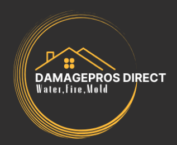How Seasonal Weather Patterns Impact Water Damage Risks and Restoration
Weather fluctuations can have a significant impact on your home, particularly when it comes to water damage. From heavy rainfall and flooding to freezing temperatures that lead to burst pipes, each season presents unique risks. Understanding these seasonal trends and how they contribute to water damage can help you take proactive measures to protect your property. This guide explores how different weather conditions influence water damage and why timely water damage restoration is essential for preventing long-term issues.
Understanding Seasonal Water Damage Risks
Each season brings specific weather challenges that can contribute to water damage. Being aware of these patterns can help you prepare your home and take preventive action to minimize potential risks.
Spring: Heavy Rainfall and Flooding
Spring is notorious for heavy rains, melting snow, and rising groundwater levels, which can overwhelm drainage systems and lead to flooding. Poorly maintained gutters and foundation cracks can allow water to seep into basements, causing significant structural damage.
Summer: Storms and High Humidity
Thunderstorms and hurricanes during the summer months can result in roof leaks, flash floods, and standing water around properties. Additionally, high humidity levels create ideal conditions for mold growth, which can escalate into serious health hazards if not addressed promptly.
Fall: Leaves Clogging Drains and Gutters
Falling leaves and debris can block gutters and storm drains, leading to improper water drainage. When water accumulates on your roof or around your home’s foundation, it increases the risk of leaks and basement flooding.
Winter: Freezing Temperatures and Burst Pipes
Sub-zero temperatures can cause pipes to freeze and burst, resulting in severe indoor flooding. Ice dams on roofs can also trap water under shingles, leading to leaks and interior water damage.
The Importance of Immediate Water Damage Restoration
Ignoring water damage can lead to costly repairs and long-term structural issues. Here’s why immediate action is necessary:
- Prevents Mold Growth: Moisture left unaddressed can lead to mold and mildew within 24-48 hours.
- Reduces Structural Damage: Prolonged exposure to water weakens walls, ceilings, and floors, compromising the integrity of your home.
- Protects Your Health: Standing water and mold spores can cause respiratory problems, allergies, and other health concerns.
- Minimizes Repair Costs: The sooner you address water damage, the less expensive and invasive the restoration process will be.
Essential Water Damage Prevention Tips
Preventing water damage is far more cost-effective than dealing with repairs. Here are practical steps to safeguard your home:
- Inspect and Clean Gutters Regularly: Remove leaves and debris to ensure proper drainage.
- Seal Cracks in Foundation and Walls: Prevent water seepage by patching up any visible cracks.
- Monitor Your Sump Pump: Test your sump pump before storm season to ensure it’s working properly.
- Insulate Pipes in Winter: Prevent freezing by adding insulation to exposed pipes in basements, attics, and crawl spaces.
- Check Your Roof for Leaks: Inspect for missing shingles or signs of wear and tear before rainy or snowy seasons.
How Professional Water Damage Restoration Works
If water damage occurs, professional restoration services ensure a thorough cleanup process. Here’s what to expect:
- Assessment and Inspection: Experts determine the extent of the damage and identify affected areas using moisture meters and thermal imaging.
- Water Extraction: High-powered pumps and vacuums remove standing water to prevent further damage.
- Drying and Dehumidification: Industrial-grade dehumidifiers and air movers eliminate excess moisture to prevent mold growth.
- Cleaning and Sanitization: Surfaces and belongings are cleaned and disinfected to eliminate bacteria and mold spores.
- Restoration and Repairs: Damaged structures, flooring, and drywall are repaired or replaced to restore your home to its original condition.
Choosing the Right Water Damage Restoration Company
Selecting a reliable restoration company is crucial for a successful recovery. Here’s what to look for:
- 24/7 Emergency Response: Water damage requires immediate action, so choose a company that’s available around the clock.
- Certified Professionals: Ensure the company is certified by the IICRC (Institute of Inspection, Cleaning and Restoration Certification).
- Advanced Equipment: Look for companies that use infrared cameras, industrial dehumidifiers, and HEPA air scrubbers.
- Positive Customer Reviews: Check online reviews and testimonials to gauge customer satisfaction.
- Insurance Assistance: A good restoration company will help with the insurance claims process, making recovery less stressful.
Conclusion
Understanding how seasonal weather patterns impact water damage risks allows you to take preventive measures and act quickly when disaster strikes. Whether you’re dealing with a flooded basement in the spring or a burst pipe in the winter, professional water damage restoration services can help minimize damage and restore your home efficiently. Be proactive in protecting your property and choose a trusted restoration company to handle emergencies when they arise.
Need Professional Water Damage Restoration?
Act fast to minimize damage and reduce repair costs. Contact our expert team today for thorough water damage restoration services.
Get in Touch Now and let us help you restore your home!


